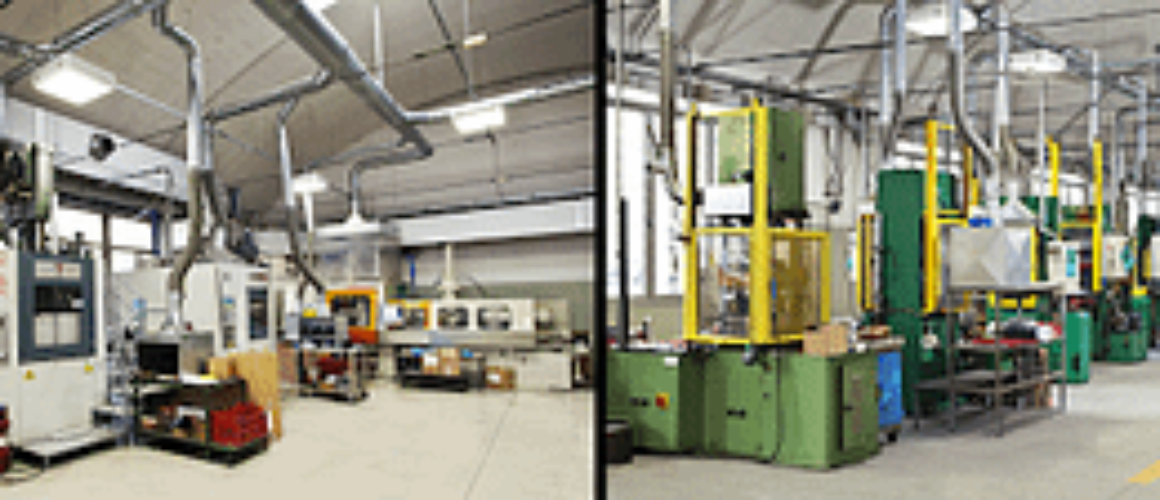Which Molding Process Is Right For Your Application?
Rubber molding is a method in which a functional rubber product is manufactured. Rubber molded parts are produced by pressing a chunk of rubber into a rubber mold, then exposed to heat to activate the chemical reaction. While there are variations in specific methods, all rubber manufacturers use heat and pressure methods to form molded rubber products.
There are three common techniques used in rubber molding:
- Rubber Compression Molding
- Rubber Transfer Molding
- Rubber Injection molding
There are a number of factors to consider when determining the type of molding process required. Some of these include:
- Size and geometry of your part
- Weight of your part
- Material required
- Volume / number of parts required
- Precision / Tolerance levels
Rubber Compression Molding
Compression Molding is the original production method for molding rubber. Compression molding involves taking rubber compounds or mixed raw material and making “pre-forms”that are close to the shape of the end product. These shapes are then loaded, typically by hand, into an open mold. The mold is closed, the rubber cured, and then de-molded. It is a useful molding process particularly for molding Gaskets, Seals, Rubber O-Rings, and large, bulky parts. It is a widely used, efficient and economical production method for many products, particularly low production volumes of medium to large parts and higher cost materials.
Advantages Of Compression Molding:
- Short set up time
- Least amount of waste
- Is cost-effective for low quantities of parts requiring a long cure time
- Ideal for parts with a very large cross section
- Ease in processing high hardness materials
- Tooling is simpler and more cost-effective
- Disadvantages Of Compression Molding:
- Parts can be less consistent
- Coloured rubber can be easily contaminated
- Longer cure times due to slow heat transfer through the rubber
Rubber Transfer Molding
Transfer Molding is a method permitting manufacturers to produce both rubber items and molded rubber parts. In this technique, manufacturers insert the molten substance into a cavity located above the pot and then use ram to force the mold through a runner and gate system as it melts upon the application of heat and pressure. Rubber transfer molding is related to injection molding since the rubber goes in the cavity after the mold is locked. Rubber products by this technique are less costly than a rubber product by compression molding.Transfer molding is an ideal process for molding parts that require multiple cavities, intricate parts that require a closed mold, bonding rubber to metal parts and if the geometry of the part might cause mold cavities to trap air.
Advantages Of Transfer Molding:
- Fewer and simpler pre-forms because one pre-form can fill many of cavities
- Tighter dimensional tolerance control because the mold is closed
- Ease in processing Colored rubber parts
- Disadvantages Of Transfer Molding:
- Increased waste material rubber left in the pot has to be discarded
- Designing and molding are complex hence process becoming costly
Rubber Injection Molding
Injection molding of rubber was originally an offshoot from the plastics industry in the early 1960s. After overcoming the initial issues of temperature (plastics are cooled when molding and rubber is heated) and pressure (rubber injection molding requires significantly more pressure per square inch of cavity surface), the process has become an efficient way to mold rubber in many cases. Rubber Injection Molding process begins with efficient preparation of material. First off, the material is mixed in bulk and immediately stripped off into continuous strips. The strips are fed into a screw with a predetermined amount of rubber into a barrel. When the mold is closed, the material in the barrel is injected into the mold cavities and cured.
Advantages Of Injection Molding:
- Lower unit costs
- Faster cycle times
- Almost negligible flashes
- Little scrap or waste material
- Higher dimensional tolerances
Disadvantages Of Injection Molding:
- Higher set-up costs
- Small runs of parts can be costly
- More expensive machinery and tooling
The choice of whether to go for Rubber Compression Moulding, Rubber Transfer Molding or Rubber Injection Moulding largely depends on cost, volume and time pressures. Neither technique is better than the other. It entirely depends on the requirements of your product and its application. At Kesaria Rubber, we have spent decades developing innovative techniques which can help you achieve your business goals. If you would like further assistance, please contact our Sealing Experts who will be happy to help, diagnose the problem and suggest possible solutions.


